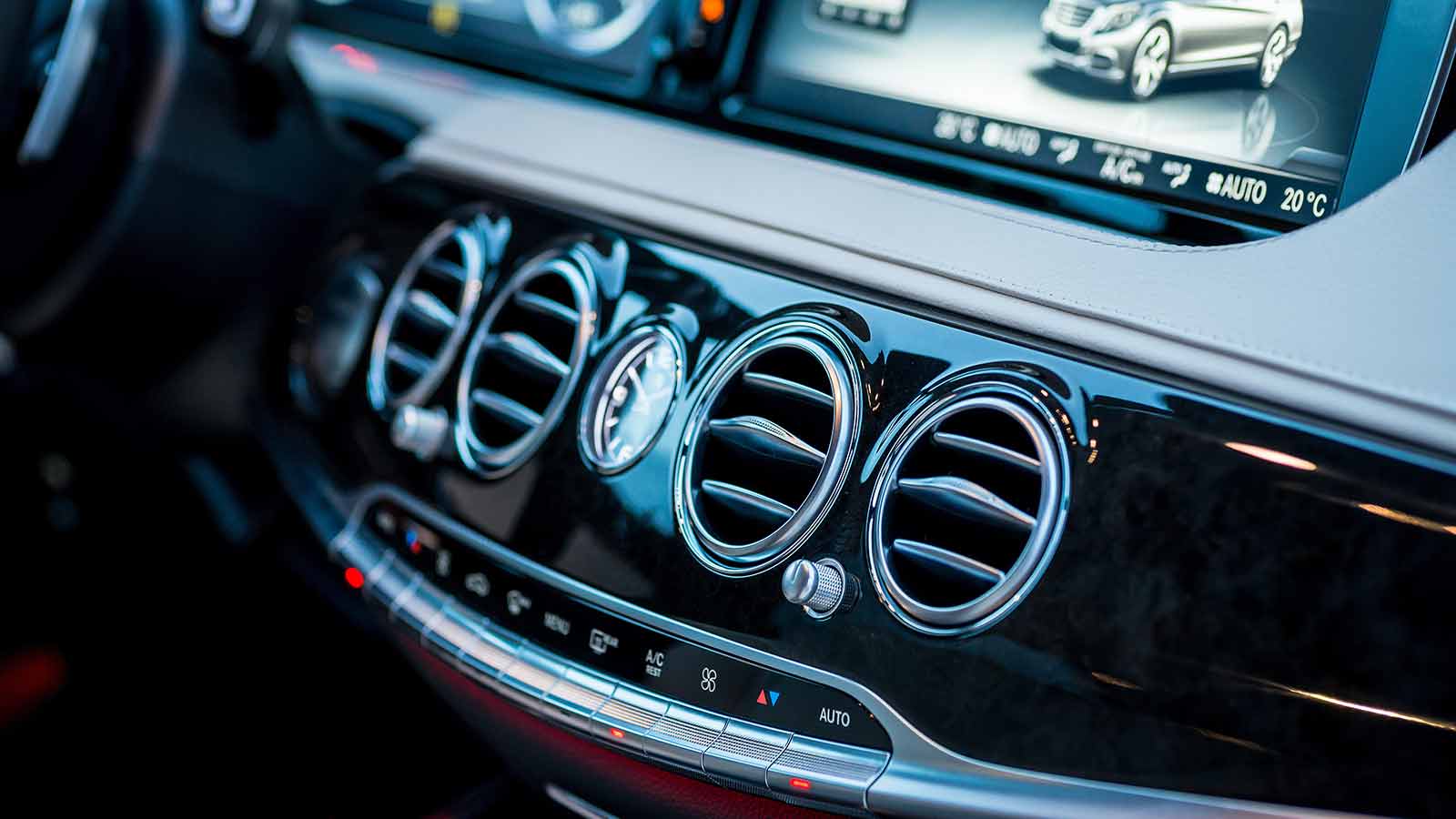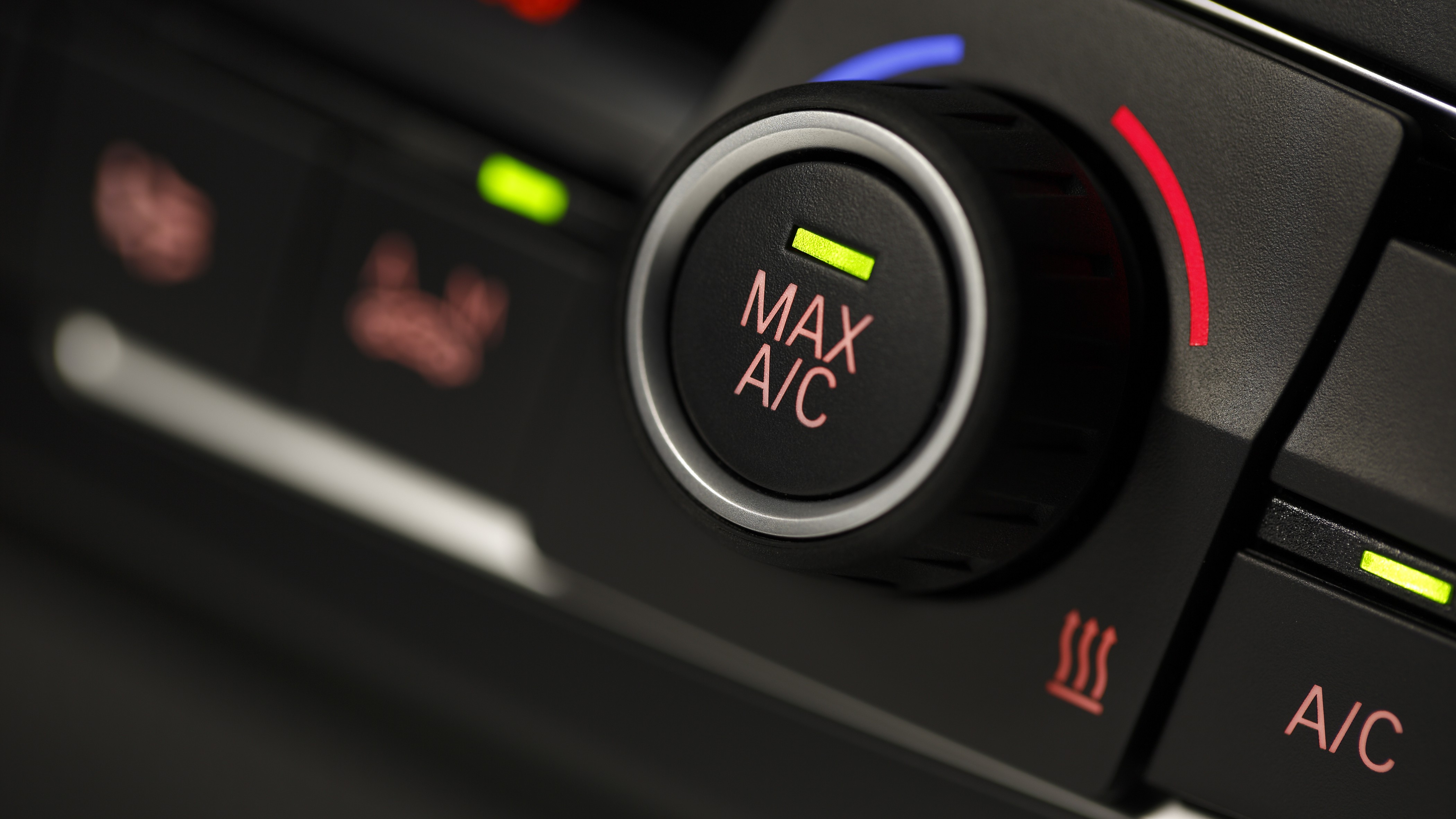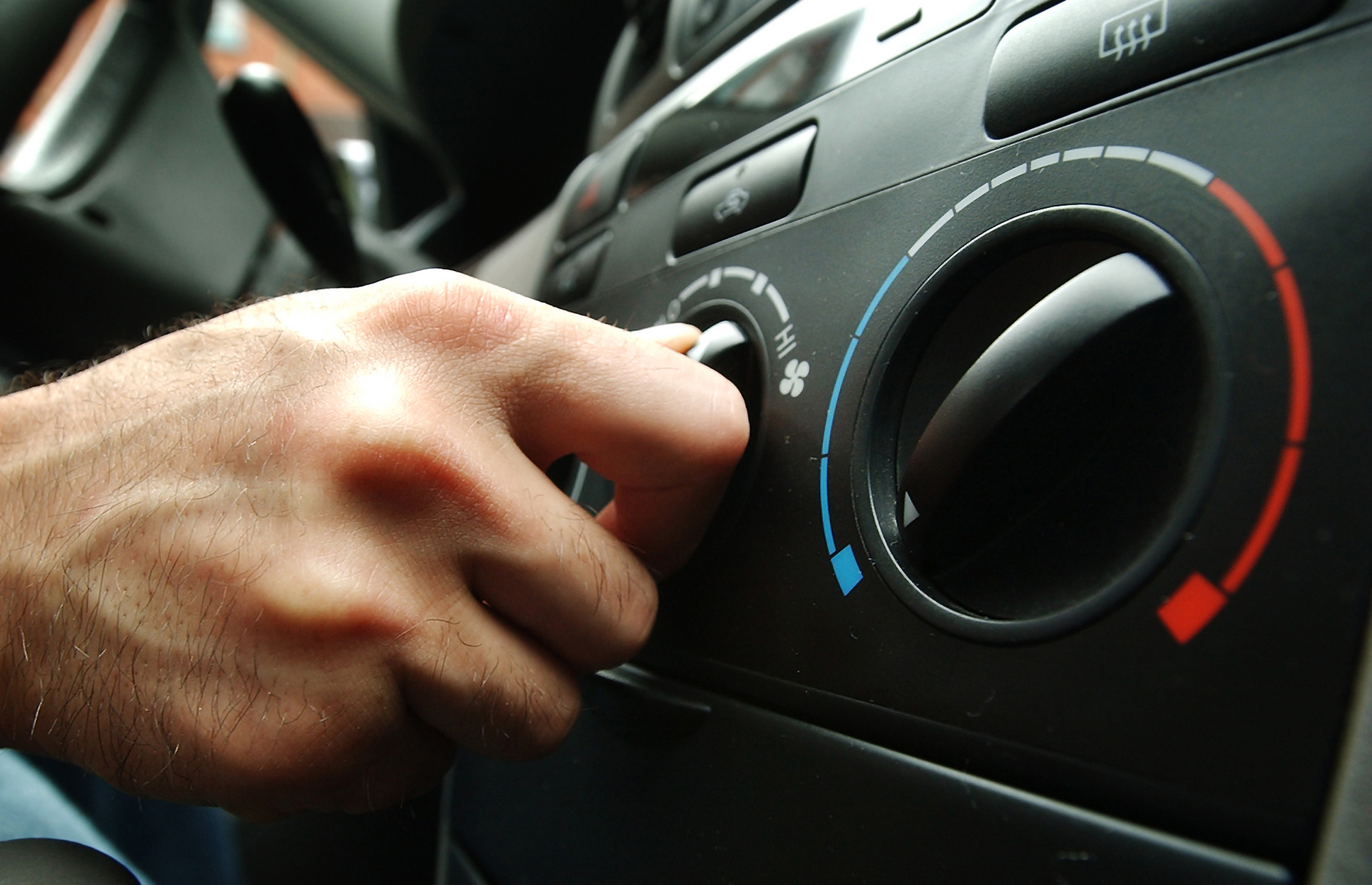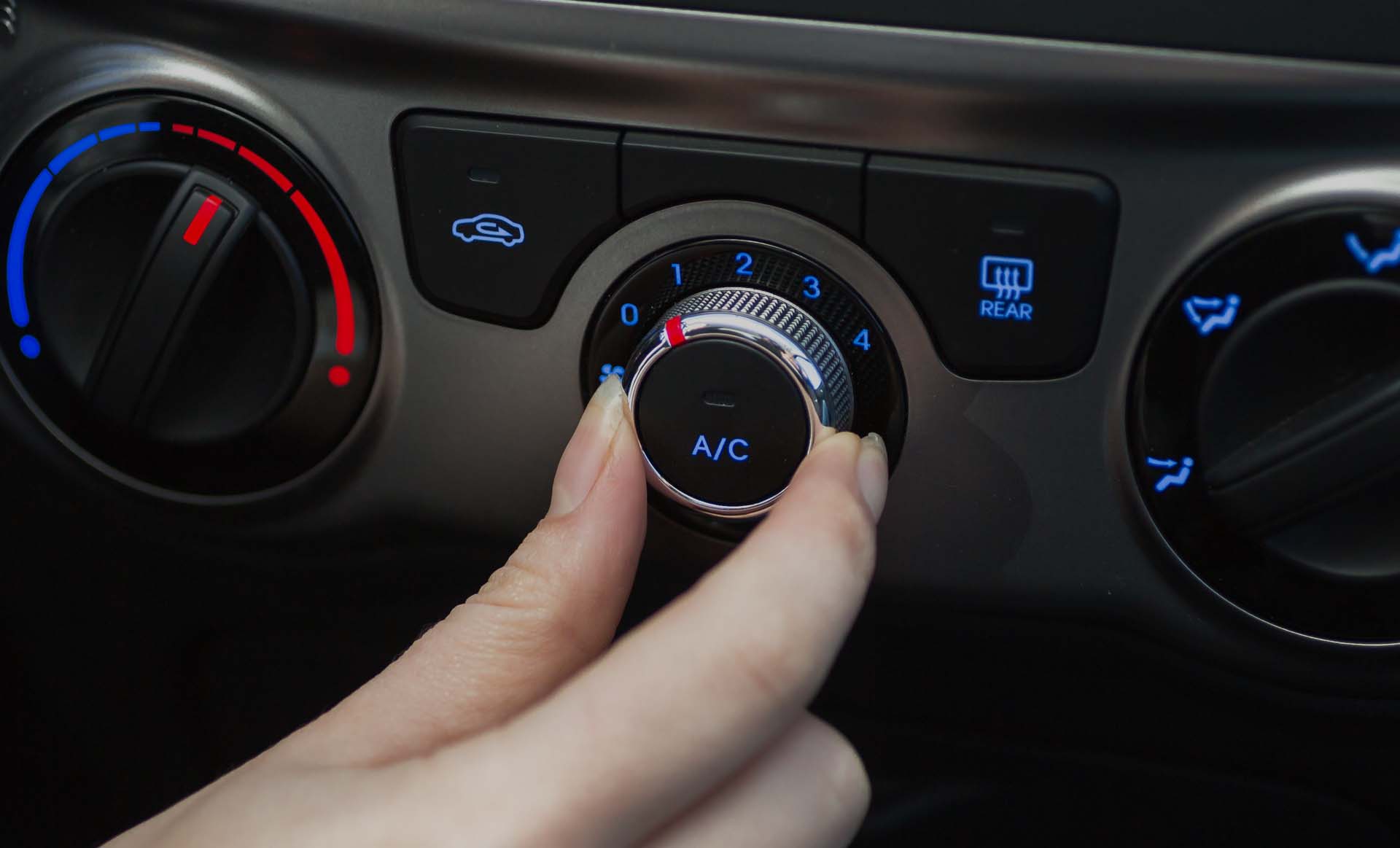The comprehensive guide to car ac repair
A faulty car air conditioner is one of the hardest issues to pinpoint and fix. The car ac breaking down is typical of the wear and tear the car goes through daily. To help you avoid spending a lot of money to fix a broken air conditioning unit.
What is a car air conditioning system?
Automotive air conditioning

Photo on foxgarageservices.co.uk
Automobile air conditioning systems are also known as AC systems make use of air conditioning to cool and warm up the air in your car. Simply put the changes in pressure cause temperature change. When you turn the air conditioning on, the compressor compresses the refrigerant (freon) causing a rise in its temperature. The heat dissipates as it flows through the condenser. Contaminants and moisture are removed as it passes through the dryer and in the expansion valve it is slowed down further, losing its pressure and lowering its temperature. The evaporator gets cold as it lowers the refrigerant temperature further while eliminating moisture. The ventilation system blows air over the evaporator for a cold breeze.
What is AC refrigerant?
It is commonly known as Freon. It is the working fluid for the AC system just like motor oil is for the engine. It is designed to cool hot air by absorbing and releasing the heat, leaving cool air breeze behind.
What parts make up an AC system?
It is made of five major parts:The compressor It is the core of the system, and for that refreshing cool breeze, it is important that it is working well. It mainly:
- Pressurizes the freon that cools the air
- It also senses temperature changes by monitoring and controlling the temperature with an electrically operated clutch. It turns on when you change the temperature setting, if you choose a different airflow setting or if the temperature of air from the surroundings goes up or down.
- It is powered by a winding belt called the serpentine belt.
A worn out or faulty compressor leaks oil and Freon is noisy and won’t work sometimes.
Condenser It turns hot refrigerant gasses to liquid. It is found at the front of many vehicles before the radiator so that when air passes through it turns the Freon gas into a condensed liquid. A worn out condenser leaks, it has clogged or damaged fins and tubes and poorly cools the Freon.
Receiver-dryer or the accumulator A receiver is found in cars with a thermal expansion valve. It is responsible for catching harmful debris, moisture and liquids from getting to the compressor and other vital ac parts. It separates the gases from the liquids. If any liquids get into the compressor, it could cause damage.
- It traps moisture by the using desiccant.
- It filters out contaminants that could cause wear damage and damaging corrosion. If moisture gets into the compressor, it can mix with the Freon creating corrosive acids.
A faulty dryer cannot defrost a misty car and performs poorly.The dryer will need to be replaced. Everytime the AC system is opened for repair, or when a qualified technician determines that it has been damaged by moisture and debris. An accumulator is similar to a receiver-dryer except it is found on cars with an orifice tube. Having an accumulator means that you do not have a thermal expansion valve. It performs the same functions as a receiver-dryer.
The expansion valve/orifice tubeIs located between the condenser and evaporator and its main function is to monitor the pressure and temperature of the AC system to know exactly how much Freon to safely let into the evaporator. And orifice tube may have a fine mesh to trap contaminants. Too little or too much refrigerant can hinder the performance of the AC system.
The evaporatorIt is responsible for cooling the air and removing moisture. It is located behind the dashboard. It works by cooling the air blown over the cool surface of the evaporator, resulting from the low-pressure Freon traveling through it. The evaporator stats the flow of the cold air into the car. A faulty or worn out evaporator will perform poorly that affecting the AC system.
There also hoses and refrigerant charging ports but the five parts above do the most significant work.
What are the symptoms of a bad AC unit?
A guide to car air conditioning issues

Photo on country1043.com
A faulty AC causes discomfort and getting it fixed can be a pricey affair. Fixing the AC can be as simple as making a simple adjustment if you know what you are doing, but if you don’t, it can be quite complex. Here are the most common car air conditioning problems that occur.
The AC blows warm air
In its gaseous state Freon inevitably leaks out of the car air conditioning system. It is normal as the system is made of varying parts that hot and cold often next to each other and Freon with refrigerator oil is bound to leak or seep out as they are often mixed. The AC may also be blowing warm air because you have a bad radiator cooling fan. It draws air through the condenser at the front of the radiator then through it. If airflow is lacking, then both the AC and the engine are going to get hot.
The AC is noisy and rattles when you turn it on
This can be due to insufficient oil in the system. Leaking oil means that there is less lubrication for the parts of the system. This can inevitably cause wear and tear and a complete breakdown of the whole system. The oil seals the compressor vanes, so it compresses the Freon better and keeps it quiet while doing so. A reduction in the Freon levels reduces the cooling capacity of the system. Adding only Freon will give you cold air for a shorter time, but the compressor will fail from lack of lubrication and replacing it can be expensive. It also seals against seeps. This oil is inexpensive, but be sure to get the right oil type as there are varying types and weights of refrigerant oil and incorrect oils can harden and damage the system.
The AC has a musty smell
The AC evaporators are prone to corrosion from the inside as sediment and harmful chemicals accumulate at the bottom. Gravity causes the corrosive substances to settle at the bottom, and since the oil is heavier than Freon, it can leak out of the holes that form.The evaporator eliminates moisture, and since it is usually in a totally dark, confined area, mold and mildew can form. This is the main reason for that musty smell.
The AC has weak air flow from the dash vents
A clogged cabin air filter is usually the reason for this weak air flow. Leaves, twigs, and debris can block air flow from outside resulting in weak air flow to the car’s interior.
There is no air flow to the dash vents
If this occurs then the heating, ventilation and air conditioning (HVAC) blower has stopped running. There are numerous reasons that can create this situation. The inexpensive motor is broken, the resistor the controls the fan speed is faulty, or a cheap relay that powers the motor is bad. A simple test of the electrical system can help isolate the problem.
The AC is leaking fluid
The AC compressor has internal bearings that prevent the leakage of Freon while it is pressurizing it. However, if due to damage or wearing out of these bearings, the refrigerant could leak out causing the compressor to fail.
The AC clutch is stuck
The unit has its own clutch connected to the car’s engine via a pulley, allowing the compressor to use the engine’s power only when needed. It the clutch was to fail in some way it would not be able to transmit power to the compressor. Most of the time this type of damage is irreparable, you will need to replace the whole thing.
How do I fix the AC in my car
Auto air conditioning troubleshooting

Photo on jiffylube.com
How much would it cost to fix the air conditioning in a car
The cost of repair is directly proportional to the severity of the problem. Leaks are the most inexpensive of these problems to fix. All that is needed is the replacement of faulty gaskets or worn out hoses usually ranging from $50 – $200. The compressor is the core of the AC unit. In the event that it is damaged or fails, repairs can cost anywhere from $500 – $1000. It can go over that amount as replacing an AC compressor can be pricey.If the AC system can get contaminated most commonly during service when the wrong refrigerant is used. This means that the whole system will need to be flushed an in the worst case completely replaced. These repairs range from $300 – $2000. These prices, however, are subject to change depending on your locale a car model.
Why should you recharge the AC?
Other than the most obvious reason of wanting cool air in the car, recharging the AC increases your car’s fuel efficiency. This is because when the Freon is low, the system struggles to produce cold air, this extra work uses more fuel.Recharging also helps you save on AC repairs as the parts wear out less and since the refrigerant is really cold, it cools down the compressor, preventing overheating and failure.
Why does the AC stop working?
As discussed earlier in the post, there are many reasons why the AC could fail. The most common one, however, is low refrigerant, and thankfully it is the easiest fix. It even after a regas the AC is not working as well it means that there are cracks in the piping somewhere in the system.
How to fix the car’s Ac unit?
Identify the issue affecting the AC system

Photo on autoevolution.com
- First turn the car and then the car AC on. Feel the air coming out of the dash vents and assess how warm, cool or cold it is. Confirm to see that the cooling fans are running, if not there must be an electrical issue. Clear the air filters of debris to increase airflow, if there is little air coming into the car.
- Second, ensure that the compressor is running. Make sure that the AC’s compressor is working well and that the clutch that engages the air conditioner is in good working form. If the clutch fails to engage, the compressor may be broken and requiring replacement, or it may just need a refrigerant refill.
- Thirdly, check the wiring leading to the compressor. Most compressors have wires that lead to the electric clutch. Find the connector and unplug it, follow the wire back to the car battery and if you hear a loud clack, the clutch is functional, if not you will have to replace it. Replacing the compressor needs specialized skills and tools and is best left to a professional.
- look for any leaks in the system. You can use detection kits to find leaks or cracks that the Freon and refrigerant oil could seep out of. These kits have special dyes that make these faults visible.

Photo on pangulfgarage.com
Here is how you recharge the car’s AC unit
Get the right refrigerant type for your car.The fastest way of figuring this out is to get the year your car was made. Any car made before 1995 uses Freon R12 while those made after, use Freon R134a which is more environmentally friendly and have discontinued the use of R12.Take note of the ambient temperature. In order to read the refrigerant gauge, you have to know the temperature of your environment. Since it occupies a different space in the can and the AC unit, it can cause varying gauge readings. When the Freon expands, it takes up more space in the can resulting in more pressure.Locate the service ports of the air conditioning unit. When recharging the air conditioner, locate and use the lower side service port. Follow the lines on the AC until you find the nozzle at the bottom of the car. You can always refer to the car manual if you are unable to locate it.Clean the area around the service port, so as not to clog up the port with the dirt and debris. You can use brake cleaner to help you clean it.Attach the charging hose to the lower side service port.Take the hose that comes with the refill kit making sure the opposite end is attached to the can nozzle. If there is a gauge in the kit, attach the hose to the gauge then to the can. Make sure the hose is long enough to connect with ease.Use the pressure chart to determine the pressure. Keep an eye on the gauge through the whole process to know when to stop recharging and make sure to read the instructions carefully if you are unsure of how to read the gauge.Turn the valve until you pierce the can’s seal and begin releasing refrigerant. Some cans require varying methods to release the refrigerant.Keep the can upright so as to allow the Freon to pass through shaking it occasionally to maintain pressure as it continues to force the Freon into the system. Do not hold it upside down though.Keep an eye out for leaks as they are fairly easy to spot during refilling. These will have to be fixed by a professional.Remove the charging hose and store the can in a cool place. Once the gauge reads full, remove the hose and return the cap. If the can is empty, dispose of it, if not make sure the can is not leaking if you choose to store it.Be sure to have any leak repairs handled. Be careful while dealing with refrigerant as it can injure you.
AC Maintenance Tips-Run the AC during cold seasons from time to time. If you do not use the defrosting feature during the cold season, the AC will be idle. This inactivity is not ideal for the O-rings or the compressor, and they need a bath of oil weekly.- Keep the AC condenser clear.This part of the AC system needs to be kept free of leaves, dirt, and debris that gets sucked into it. They Can block airflow through the condenser causing the overheating of the compressor and subsequent failing.- Remove the moisture from your AC.No amount of humidity is too small to leave in the system especially after opening it up for repairs. It can freeze up and block the pipes if it mixes with the refrigerant oil; it can cause it to harden into a wax-like residue that can damage the AC parts.